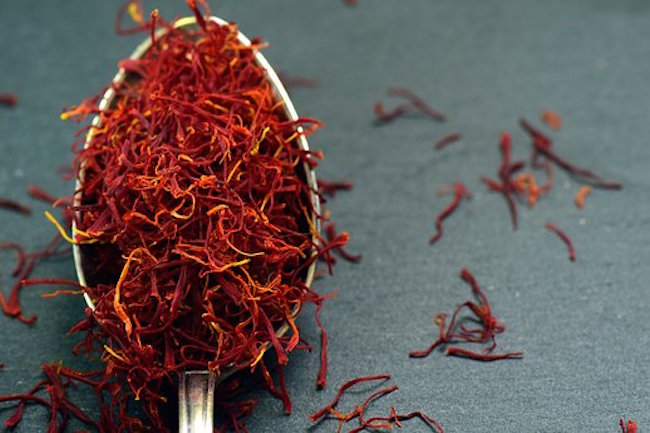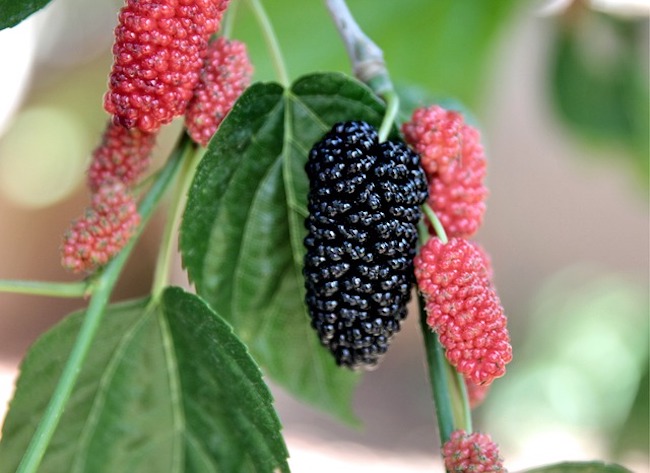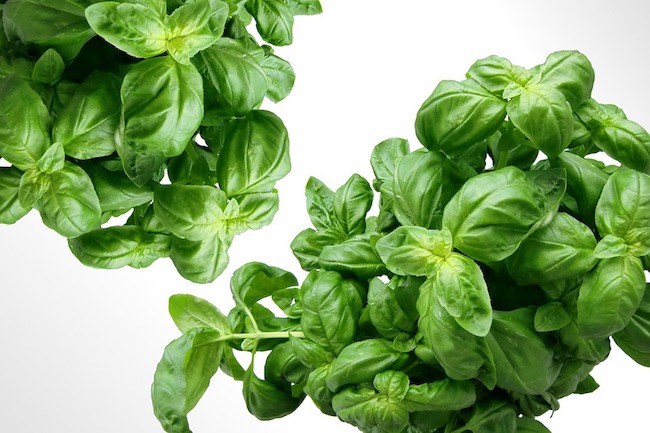What Is Saffron Good For? from Mercola
Saffron belongs to the iris family, and has had a plethora of uses throughout millennia. As far back as the writings of Galen and Hippocrates, saffron was mentioned as a medical treatment for coughs, colds, stomach ailments, insomnia, uterine bleeding, scarlet fever, heart trouble, and flatulence.
Naturally, one of saffron’s first uses may have been for dyeing textiles, since a single grain can color 10 gallons of water with a distinctive yellow hue. More than a grain is used, however, to color the bright orange robes worn by Buddhist priests in India. Three wispy saffron “threads” can be gleaned from each delicate crocus, which, ironically, is lavender-purple in color.
As a spice, saffron is known for what it does to energize dishes with a pungent, earthy essence. It’s an ingredient used in Sweden, England, the U.S., and France, not to mention the countries where, collectively, around 50 tons are grown every year: Azerbaijan, China, Egypt, France, Greece, India, Israel, Iran, Italy, Mexico, Morocco, Spain, and Turkey. The commercial cost is about 50 million dollars, so it’s a good thing saffron can remain fresh in an airtight container for several years.
Why so expensive, you may ask? Because the cultivation and harvest is still performed as it was since ancient times: by hand. Elderly village women are usually set on this task of removing the saffron “threads.” It takes 4,500 crocus flowers to make up one ounce of saffron spice.
Of course, the high cost is a magnet for pretenders, who hawk saffron wannabes derived from substances other than the crocus flower. Indian safflower or compositae is one of them, a paler red version sometimes masquerading as the real thing.
It’s been suggested that buying saffron at your local supermarket might not yield the freshest product. A better option might be obtaining it from an ethnic specialty grocery store. But make sure it’s actually saffron you purchase, because another affectation is “meadow saffron” (Colchicum autumnale), which, although used as a medicine, can be quite toxic, so it should be strictly avoided.
Health Benefits of Saffron
It must be noted that no one will eat an ounce of saffron in one sitting; recipes usually call for half a teaspoon or less, but examining an ounce is a good way to determine the nutritional aspects of this intriguing spice. First, the manganese content is off the charts at nearly 400% of the daily recommended value! Everything else seems a little chintzy after that, but the next-largest nutritional quantities also are quite impressive: vitamin C – 38%; magnesium – 18%; and iron – 17%. Potassium and vitamin B6 both impart 14% of the daily recommended value.
Manganese helps regulate blood sugar, metabolize carbohydrates, and absorb calcium. It also helps form tissues, bones, and sex hormones. Vitamin C is an infection fighter; iron purifies your blood; and the vitamin B6 content helps form red blood cells and assures nerves will function as they should. Potassium helps balance fluids in cells, which, if low, can cause painful muscle cramps.
Beyond that, saffron contains more than 150 volatile compounds, among others. Picrocrocin, for instance, is the main substance responsible for the strong taste. Safranal brings saffron its characteristic odor and fragrance. Crocin, which delivers the intense orange color, is an indication of this spice’s medicinal qualities, i.e. its powerful carotenoids and antioxidants that can protect your body from free radical damage.




